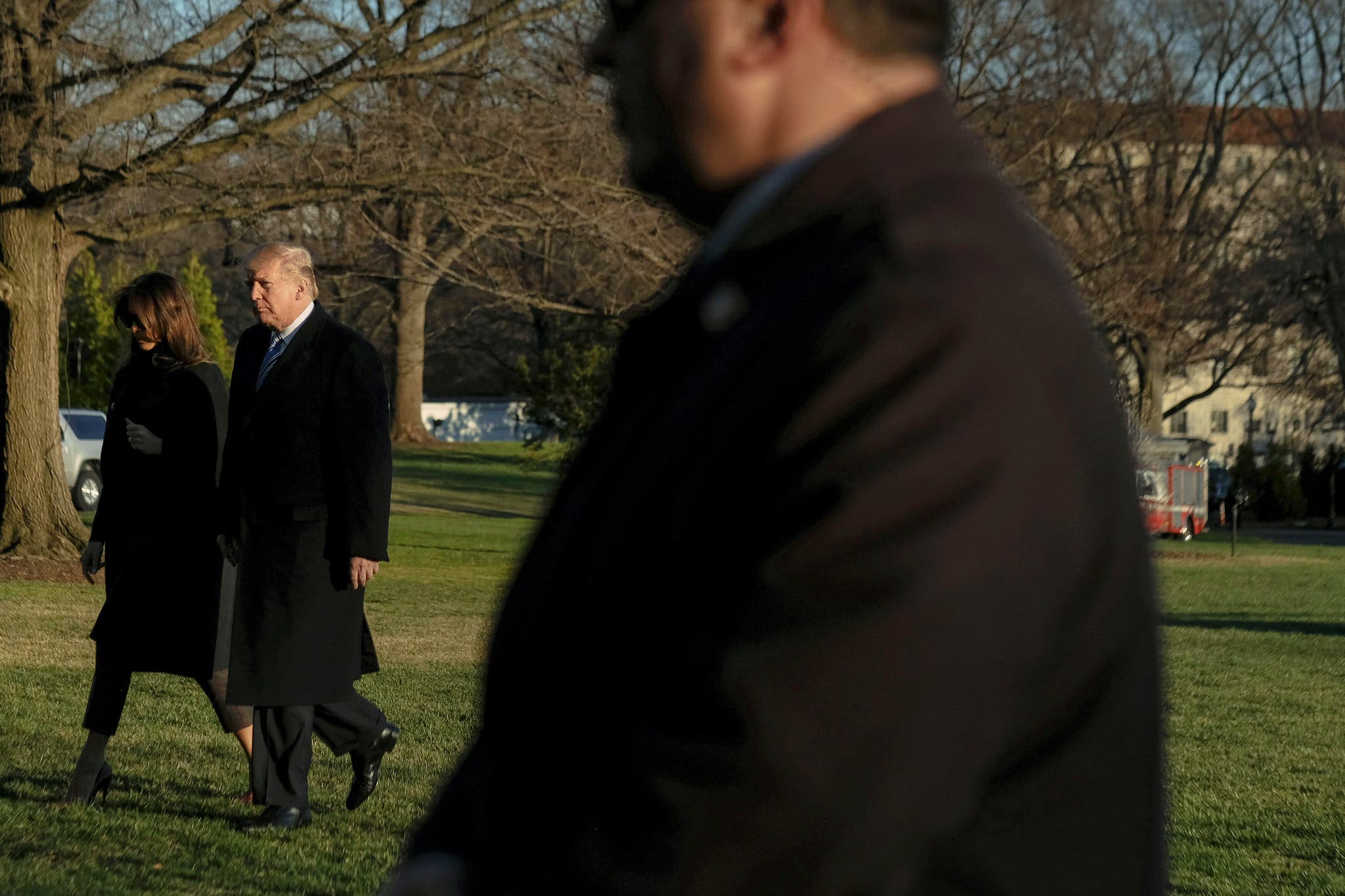Impact Of Potential Trump Tariffs On The Commercial Aircraft Industry

Table of Contents
Disruption of Global Supply Chains
The commercial aircraft industry relies heavily on a complex global supply chain, with components sourced from numerous countries. The reintroduction of Trump-era tariffs would severely disrupt this intricate network, leading to increased costs and delays.
Increased Production Costs
Tariffs on imported parts dramatically inflate manufacturing costs for major aircraft manufacturers like Boeing and Airbus. These tariffs directly impact the bottom line, forcing companies to either absorb the increased costs or pass them on to airlines.
- Engines: Many aircraft engines incorporate parts manufactured in countries like the UK, France, and Canada. Tariffs on these components would significantly increase engine production costs.
- Avionics: Sophisticated avionics systems often involve components from various international suppliers. Tariffs could lead to substantial price increases for these essential systems.
- Other Components: Numerous other crucial parts, from landing gear to wiring harnesses, are sourced globally, making the entire industry vulnerable to tariff-related price hikes.
Manufacturers may attempt to absorb some of these increased costs initially, but sustained tariffs would necessitate passing them along to airlines in the form of higher aircraft prices. This could trigger a domino effect throughout the industry.
Bottlenecks and Delays
Tariffs could create significant bottlenecks and delays in aircraft production and delivery. Increased customs inspections, import restrictions, and potential shortages of specific components would all contribute to these delays.
- Customs Delays: Increased scrutiny of imported parts could lead to significant delays at customs, disrupting carefully planned manufacturing schedules.
- Component Shortages: Tariffs might incentivize manufacturers to source parts domestically, but the lack of established domestic supply chains could lead to shortages of specific components.
- Logistical Challenges: Navigating the complexities of international trade under a tariff regime presents significant logistical challenges, adding further delays.
These delays would have a considerable impact on airline schedules, expansion plans, and overall operational efficiency. Airlines relying on timely deliveries of new aircraft could face significant setbacks.
Price Increases for Airlines and Consumers
The ripple effects of increased production costs due to Trump tariffs on commercial aircraft are far-reaching, impacting not only manufacturers but also airlines and, ultimately, consumers.
Higher Aircraft Purchase Prices
Increased manufacturing costs, as discussed above, are inevitably passed on to airlines in the form of higher aircraft purchase prices. This directly impacts airline budgets and investment strategies.
- Reduced Fleet Modernization: Higher prices could force airlines to postpone or reduce their fleet modernization plans, limiting their ability to improve efficiency and reduce operating costs.
- Impact on Airline Profits: The higher cost of new aircraft directly eats into airline profits, potentially limiting their ability to invest in other areas of their business.
- Potential for Route Cancellations: In extreme cases, the inability to afford new aircraft could even lead to the cancellation of certain routes, especially those deemed less profitable.
Estimates suggest that even modest tariff rates could lead to significant increases in aircraft prices, potentially in the hundreds of millions of dollars per aircraft.
Increased Ticket Prices
Ultimately, the added costs incurred by airlines due to higher aircraft purchase prices will likely be passed on to consumers in the form of higher ticket prices.
- Reduced Air Travel Demand: Higher ticket prices could lead to a decrease in air travel demand, particularly among price-sensitive travelers.
- Impact on Tourism and Business Travel: This could negatively affect the tourism and business travel sectors, which are heavily reliant on affordable air travel.
- Stranded Airlines: Airlines unable to absorb the higher costs might have to implement drastic measures, including potential job losses or route closures.
While airlines may try to absorb some of the increased costs, the considerable impact of higher aircraft prices will likely translate to at least partially increased ticket prices for air passengers.
Geopolitical Implications and Trade Wars
The re-imposition of Trump-era tariffs on commercial aircraft carries significant geopolitical implications and could escalate trade tensions between the US and other countries.
Impact on International Relations
The introduction of tariffs could significantly damage international relations, particularly between the US and the European Union (EU), a major player in the commercial aircraft industry.
- Retaliatory Tariffs: The EU and other affected countries might retaliate with their own tariffs on US goods, triggering a trade war that could harm both economies.
- Damage to International Cooperation: This trade dispute would likely damage international cooperation on other important issues.
- Uncertain Political Landscape: The resulting uncertainty would further complicate international trade negotiations and create instability for businesses worldwide.
The ramifications extend beyond the commercial aircraft sector, affecting broader economic and political relations globally.
Shifting Global Market Dynamics
Tariffs could reshape the global aircraft market, potentially benefiting aircraft manufacturers in countries not subject to these tariffs.
- Increased Market Share for Competitors: Manufacturers outside the scope of the tariffs, such as those in China or certain Asian countries, could gain significant market share.
- Shift in Innovation and Investment: Investment in research and development could shift to regions less impacted by the trade disputes, potentially impacting global innovation.
- Long-Term Economic Consequences: The long-term effects on global competition and industry leadership could be significant.
Countries not affected by the tariffs may enjoy increased competitiveness and a stronger position within the global commercial aircraft market.
Conclusion
The potential re-imposition of Trump-era tariffs on commercial aircraft poses a serious threat to the global industry. The resulting supply chain disruptions, price increases for both airlines and consumers, and potential escalation of trade wars carry considerable negative consequences. Understanding the multifaceted impact of Trump Tariffs Commercial Aircraft is crucial for all stakeholders. Stay informed about trade policy developments and advocate for policies that promote free and fair trade to mitigate the potentially devastating effects of these tariffs on the global aviation sector. Continue researching the evolving impact of Trump Tariffs Commercial Aircraft to navigate this complex and challenging issue.

Featured Posts
-
 Indy 500 2025 Notable Driver Absence Confirmed
May 11, 2025
Indy 500 2025 Notable Driver Absence Confirmed
May 11, 2025 -
 Rahal Racing Establishes Scholarship Fund For Future Stars
May 11, 2025
Rahal Racing Establishes Scholarship Fund For Future Stars
May 11, 2025 -
 Rays Vs Yankees Key Injuries For The April 17 20 Series
May 11, 2025
Rays Vs Yankees Key Injuries For The April 17 20 Series
May 11, 2025 -
 Princess Beatrice Addresses Prince Andrew And Fergies Split
May 11, 2025
Princess Beatrice Addresses Prince Andrew And Fergies Split
May 11, 2025 -
 Aaron Judges 2024 Season A Yankees Magazine Retrospective
May 11, 2025
Aaron Judges 2024 Season A Yankees Magazine Retrospective
May 11, 2025
